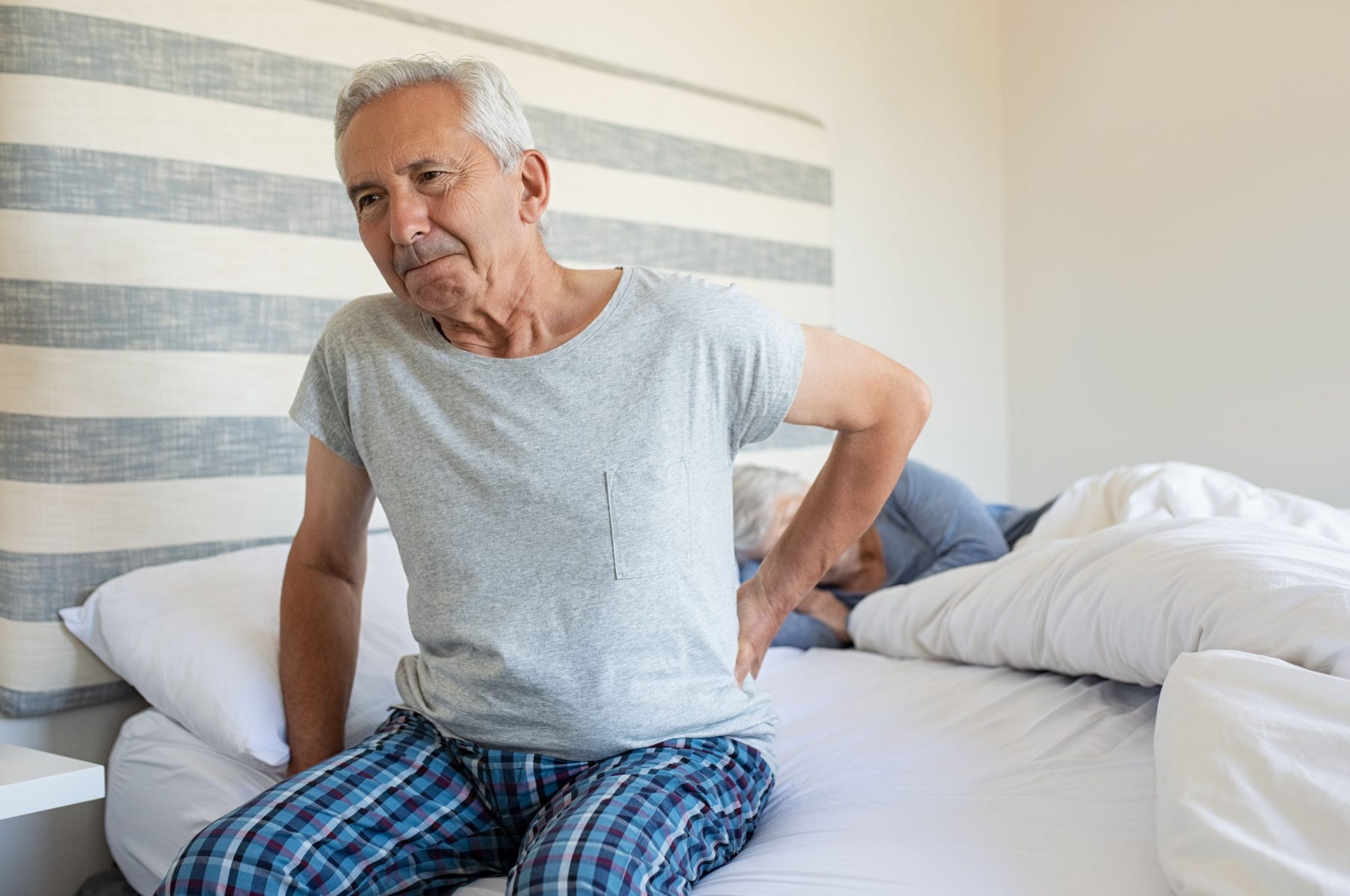A Guide to Back Pain In Your 60s
Category: Back Pain | Author: Stefano Sinicropi

We’re back with another installment of how back pain can affect you differently depending on your age. Previously, we looked at some of the most common causes of back pain in your 20s, 30s, 40s and 50s, and in today’s blog, we shine a light on how back pain tends to affect people in their 60s. Below, we examine some common causes of back pain for people in this age group, and we share some tips for preventing and treating it.
Causes Of Back Pain At 60
While back pain may become a little more likely once you’ve reached your 60s, it’s important to remember that back pain is never normal and shouldn’t be treated as such. If you accept back pain and just try to push through the discomfort, odds are it’s only going to get worse, and that can complicate treatment. With that in mind, here’s a look at some of the most common causes of back pain in your 60s.
- Degenerative Disc Disease – Over time, stress and pressure on our spine can lead to wear and tear on our spinal discs. This leads to natural degeneration, which can make it more likely that a disc slips out of place and compresses a nerve. Degenerative disc disease is most common in individuals who worked manual labor careers or who are overweight, as the spinal discs are then tasked with displacing more stress. Healthy eating habits, regular exercise and maintaining a healthy weight can help you slow this natural degeneration, while physical therapy and postural improvements can help to treat discs that have shifted and compressed nearby nerves.
- Activity Changes – Many people retire in their 60s, and when they find a lot more free time on their hands, their bodies will have to start to learn a new routine. Some spines thrive without the repetitive daily motion of manual labor, whereas others become overloaded because retirees take up new active hobbies. We want you to remain active in your 60s and throughout retirement, but you need to be conscious of your spine and how activity is affecting it. If you’re going to be more physically active or beginning a new activity regimen, slowly ease into activity and make sure you are stretching beforehand so that your body can get used to the new movements without overstressing your spine.
- Menopause-Related Spinal Fractures – Fracture risk also increases in women who have gone through menopause. During the menopausal transition period, your body doesn’t produce as much estrogen, which in turn leads to more bone resorption than formation. If new bone is not being produced as readily as in the past, your bones will be weaker, which is especially worrisome if you continue to be a very active individual. We don’t want you to slow down, but we want you to be aware of your fracture risk and strive to get plenty of Vitamin D and calcium in your diet. Also, be mindful of the stress you’re putting on your spine so that you don’t overload it.
- Delayed Treatment – People of all ages are hesitant to have their issues looked at by a specialist, but this tends to be especially true for patients in their 60s. Oftentimes they just want to “tough it out” or learn to live with the discomfort, but that typically only leads to more pain. You’re not burdening your physician by scheduling an appointment or doing yourself any favors by trying to grit your teeth and live with the pain. Solutions are typically very simple and straightforward, and the vast majority of patients say that they wish they would have had their chronic back pain treated sooner. For your sake and for the sake of your family, have your back pain treated by a professional.
If you’re in your 60s and you’re finding that back pain is becoming more present in your life, take a couple minutes to schedule an appointment with Dr. Sinicropi and his team. We can help you find a solution to your nagging back pain. Call his office today at (651) 430-3800.